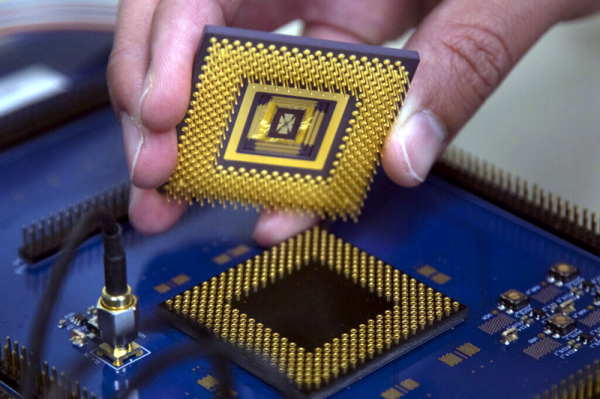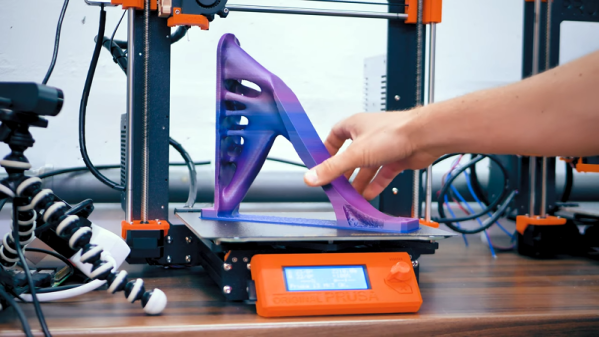Whether it is motivated by a dream of superhuman strength courtesy of a mech suit or of mobility for those with impaired muscle function, the powered exoskeleton exerts a curious fascination among engineers. The idea of a machine-augmented human body achieving great things is thwarted though by the difficulty of the task, actuators and power sources small enough to be worn comfortably represent a significant challenge that is not easily overcome. It’s a subject that has captivated [Kristjan Berce] since at a young age seeing his grandmother struggling with lifting, and he presents a working powered exoskeleton arm as a proof of his ideas.
It’s a wonderful exercise in low-tech construction with hand tools and a drill press on pieces of aluminium and wood. Motive power comes from an automotive windscreen wiper motor, and electrical power comes from a hefty LiPo attached to the device’s harness. There is a feedback potentiometer incorporated into the elbow joint, and an Arduino oversees the operation under the direction of a pair of glove-mounted buttons. It’s certainly impressive to see it in the video below lifting a bicycle, though we wonder how its weight might affect someone with less muscle function than average.
Projects like this one are very good to see, because there’s a chance that somebody out there may be helped by building one of these. However there is always a note of caution to be struck, as the best solutions come from those who need them and not those who merely think they have the solution. We have written about the Engineer Saviour Trap here in years past.
This isn’t the first prosthetic arm we’ve seen though, we covered a hackerspace in England printing one for a local youngster.
Continue reading “An Exoskeleton Arm For A Hacker On A Budget” →

















